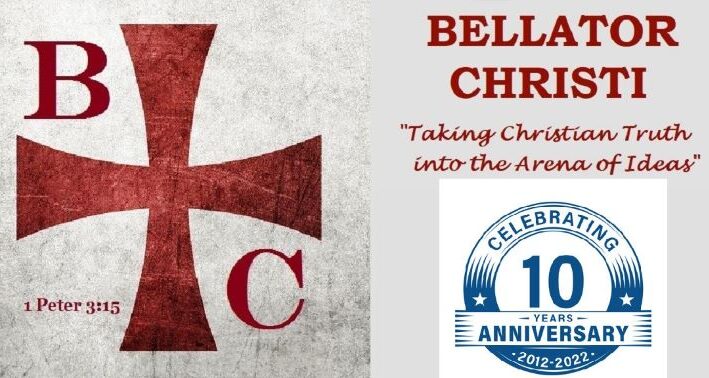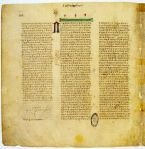“That’s not in my Bible” is a classic statement given by those who become entrenched in the debate on translations. Due to the nature of tradition, many will elevate a particular translation to the point of being the only true Bible. Those in universities and seminaries know of the difficulties in the translation process, but many ordinary Christians do not. In this article, some classic issues on Bible translations will be examined. Hopefully, you will become more knowledgeable about Bible translations after having read this article.
The Translation Process
Translating a text from one language to another is a difficult process. One of the core difficulties in the translation process is that some words do not have an exact equivalent. For instance, Greek is an inflected language which places more emphasis on moods than does a language like, say, English. This does not mean that a good translation cannot be made. It just means that the translation process is not as much of an “open and shut” case as one might think. Some have said, “I want the translation to read exactly like the originals.” That may not always be possible. In English, there is a sentence structure that follows as subject, verb, direct object. In Greek, the verb could come first or the direct object could come first depending on what has more emphasis. For instance, take the following text: “Οὕτως γὰρ ἠγάπησεν ὁ θεὸς τὸν κόσμον ὥστε τὸν υἱὸν τὸν μονογενῆ ἔδωκεν, ἵνα πᾶς ὁ πιστεύων εἰς αὐτὸν μὴ ἀπόληται ἀλλὰ ἔχῃ ζωὴν αἰώνιον” (John 3:16, The Greek New Testament: SBL Edition). If the text was translated verbatim, it would read, “In this way for loved the God the world so that the Son the one and only gave, so that everyone the believed in Him not perished but have life eternal.” In order to make the text understandable, the words must be changed. If one does so, then the text can be understood to say, “For God loved the world so much that He sent His one and only Son, so that everyone who believes in Him will not perish but have eternal life.” Every translation must take this license, even the King James Version. Some will ask, “Why are there differences in the King James Version and modern translations?”
Text-Types–Their Differences and Which is Most Reliable
Each translation uses a text-type to translate from. A text-type is a group of early New Testament documents that are used to translate the New Testament into modern languages. Due to the persecution of the church, the autographs (original writings) are lost to us. Although we do not possess the original documents of the Bible, we do possess early manuscripts that allow translators to know, with great precision, what was in the original documents. This can be known by these text-types, early quotations from the early church fathers, and early fragments and documents (some of which date less than 50 years from the originals).
Blomberg explains that three text-types exist. “When it comes to reliability and closest approximation to the original text, not all text types are created equal. Three major text types emerged in the early centuries of the church: (1) the Western, (2) the Alexandrian, and (3) the Byzantine” (Blomberg, 10). Blomberg also offers the following chart:
Text Type
Alexandrian
Characteristic Features
-Copied with meticulous care and accuracy
-Earliest exemplars are dated to 2nd century
-Generally preferred over Western and Byzantine due to characteristic accuracy
Examples
Codex Vaticanus, Codex Sinaiticus, and Coptic translations
Text Type
Western
Characteristic Features
-Early dating (some as early as 2nd century)
-Use of loose paraphrase, harmonization with NT texts
-Enrichment of narrative through inclusion of extra/ explanatory material
Examples
Codex Bezae, Old Latin or italic manuscripts
Text Type
Byzantine
Characteristic Features
-Continual development from 3rd century through early Middle Ages
-Clarity and completeness
-Conflated preexistent divergent readings by expanding the text and smoothing out word difficulties
-Became the dominant Greek text type from the 7th century onward
-Represents 80% of existing manuscripts today
Examples
Textus Receptus, Majority Text
(“Table 1.1 Major Text Types, Characteristic Features, and Examples” from Craig Blomberg, A Handbook of New Testament Exegesis, pg. 10, adapted to fit blog)
As one could probably tell, the Alexandrian is more accurate than the Western text type and far earlier than the Byzantine text-type. Therefore, modern translators prefer the Alexandrian text-type to the Western and Byzantine text-types. The King James and New King James Versions are translations from the Byzantine text-type whereas modern translations (New American Standard, New International Version, New Living Translation, Holman Christian Standard Bible, and etc.) use the Alexandrian text-type. So, which comes from the inspired Bible?
What is the Inspired Bible?
Some proclaim a certain translation as the inspired Bible. However, can this be true? The inspired Scripture is nothing less than the autographs themselves. Paul writes, “All Scripture is inspired by God and is useful to teach us what is true and to make us realize what is wrong in our lives. It corrects us when we are wrong and teaches us to do what is right” (2 Timothy 3:15, NLT). If it is held that the writers of the Bible were inspired, then it must be accepted that the final compositions of their texts were inspired. Even if the Gospel of John is a compilation of John’s writings, then the gospel can still be seen as having been written by John and inspired by God. Some claim that Paul was referring only to the Old Testament (or Hebrew Bible). This is unfair as most of the New Testament writings would have been written by the time Paul wrote the late letter. Therefore, if the inspired text of the Bible is the autographs (the finalized original writings of the Old and New Testaments), then it is vital that translators have a text that is closest to the originals.
Due to the fact that differences exist between the Alexandrian and Byzantine text-types and due to the fact that the Alexandrian is more accurate, any additions added by copyists should be marked, if not deleted. Some claim, “What about the text in Revelation that speaks to taking away portions from the Word of God?” The text reads, “And I solemnly declare to everyone who hears the words of prophecy written in this book: If anyone adds anything to what is written here, God will add to that person the plagues described in this book. And if anyone removes any of the words from this book of prophecy, God will remove that person’s share in the tree of life and in the holy city that are described in this book” (Revelation 22:18-19, NLT). One, John is speaking about the book of Revelation, although it could be assumed that the same promise would hold true of the entire Scripture. Second, the warning includes adding to the words of Scripture as much as deleting them. If words have been added to the Scripture, the Christian should desire to have them deleted in order to possess an accurate translation and one that aligns with the original text. Although there are a few words that have been added here and there to the Byzantine text. 99% of the New Testament is without any issue. None of the differences affect any theological issues and no major historical event.
Are There any Main Passages That Are Significantly Different?
In all the differences, only two significant portions of the New Testament are affected by these text-type differences.
Mark 16:9ff The first section affected is the ending of Mark 16. Most ancient documents have the text ending at verse 8. What happened to the ending is a great mystery. Verse 8 leaves the text with the angels’ announcement to the women and the promise that Jesus would meet them, but does not record the actual appearances of Jesus to the disciples. Did Mark die before adding the appearances? Was he persecuted where he could not finish the text? Who added the text? I have a theory that Luke may have finished the text because it appears that the flow of appearances follows the appearances found in Luke’s gospel. There is no hardcore evidence for this other than the parallels between the ending of Mark and Luke, but it is a possibility. Some scholars feel that Mark may have ended the gospel abruptly for a reason. Perhaps, Mark left the appearances a mystery. There was the promise that Jesus had risen and would appear to them. This is a possibility, but only God knows for sure.
John 7:53-8:11 This is perhaps the saddest problem of the two. This text covers the story of Jesus and the woman caught in adultery who is redeemed when Jesus said, “Those of you without sin, cast the first stone.” The problem is that the story does not appear in the earliest texts of the Gospel of John. However, because there is a difference does not mean that the text is not original. There is something bizarre with this text. The story is not found in the earliest documents of the Gospel of John, but it is found in the early documents of the Gospel of Luke. As a matter of fact, the story fits better in Luke 21. The terminology even fits Luke’s gospel better than John’s. Borchert writes, “The context would assume that Jesus had been teaching in the temple on several occasions and at daybreak (orthos, 8:2; the word is used elsewhere in the NT only in Luke 24;1; Acts 5:21) he began to do so again” (Borchert, 371). So the text seems to be genuine, but misplaced.
Other than these two text-type differences, most other differences only affect a few words here and there.
Conclusion
Perfect translations do not exist. However, translations are more accurate than ever due to archaeological findings of ancient New Testament texts. We possess a very accurate Bible. The reader can take comfort in knowing that the Old Testament matches the Dead Sea Scrolls and other ancient Old Testament texts to a degree of over 95%. The New Testament matches the earliest texts to a percentage of 99%. That is an overall average of 97% accuracy…and that is a conservative estimate! The Christian can be comforted in the fact that the Bible they possess is a very accurate Bible.
There are a variety of translations on the market today. Formal equivalent translations are word-for-word translations. The trouble is that these translations are more dry than others (meaning that these translations are more difficult to read). They generally hold a higher reading level than functionally equivalent translations. Formal equivalent translations include: the New American Standard, the Amplified Bible, and the New King James Version. Functionally equivalent translations are dynamic in the sense that they offer a thought-for-thought translation. These translations offer a sentence-by-sentence translation. These translations are more readable, but take a greater license in the translation process. Functionally equivalent translations include: the New International Version, the New Living Translation, and the Holman Christian Standard Bible. Paraphrases are generally offered by one individual. They offer one person’s take on a scripture. Paraphrases include: the Message, the Living Bible, and etc. This author generally advises individuals to read paraphrases with caution. Formal equivalent and functionally equivalent translations use teams of scholars and are preferred over paraphrases.
Bibliography
Blomberg, Craig L. A Handbook of New Testament Exegesis. Grand Rapids, MI: Baker Academic, 2010.
Borchert, Gerald L. The New American Commentary: John 1-11. Nashville, TN: Broadman & Holman Publishers, 1996.
Holmes, Michael W. The Greek New Testament: SBL Edition. Logos Bible Software, 2010.
Tyndale House Publishers, Holy Bible: New Living Translation, 3rd ed. Carol Stream, IL: Tyndale House Publishers, 2007.









Note: Keith’s posts do not appear because they do not adhere to the guidelines of the website. Ad hominem fallacies (argumemts based upon attacking an individual rather than the argument) are not permitted.
Keith, while still committing the ad hominem fallacy noted that the manuscript evidence differs and he is right. However, there is early attestation that allows scholars to know with 99% certainty what was in the New Testament autographs. Those changes are demonstrated in newer translations such as the ESV and NASB. Most of the differences occur by copyist errors which are seen in later manuscripts. Earlier manuscripts hold less copyist errors as they are closer to the time of the original autographs. Such a charge actually creates problems for a belief in the sole inspiration of an individual English translation.
The charge has also been made that newer translations are Gnostic. This is a bizarre charge seeing that the ESV strongly translates 1 John 4:2 as “By this you know the Spirit of God: every spirit that confesses that Jesus Christ has come in the flesh is from God.” This clearly stands juxtaposed to gnostic teachings which profess that Jesus was merely a phantasm or spirit not possessing a real body.
Keith, if you would read the guidelines offered for posting comments, you would find that ad hominem attacks are not permitted on this website. Opposing viewpoints are permitted as long as they engage the content and not the person.
I believe the statement that a true verbatim translation is not possible is not truthful. Why could it not be translated verbatim? It would mean more, give more options for each person to read and obtain what they could take from it instead of listening to others explain what they are supposed to understand.
Sounds kinda fishy to me.
I have seen many many verbatim translations from jewish friends of mine regarding other ancient documents and they were understandable if one simply put preconceived notions out of their mind.
Doc, I’m not sure what you mean by “verbatim”? Are you referring to the article or one of the comments?
Sorry, a response I had read here noted that a verbatim translation was not a real possibility and that the read of a verbatim translation would be difficult.
Yes it would be difficult for we westerners to read and easily understand but if one has the original document, which in it’s self is a hard claim with all the Greek translations that changed much of the ancient texts, it would read strangely. But one could garner from it as good of a meaning as anyone else could. It does not take a theologian to understand ancient texts. Just a knowledge of them and an open mind. We westerners fall short in the open mind category in my opinion.
I’ve tried to explain it to people with a sentence written in english spoken in spanish and then the spanish statement written down verbatim and compared to the original english sentence. It would not at all look the same.
And these differences are where we as westerners move away from real accurate readings and understandings of the ancient documents.
We get someones understanding of an ancient text and are told their understanding is Gods words, which it is not. It’s merely a mans interpretation of an ancient doc.
Hope I did not muddy up the water here.
Doc, I thought that was what you meant. I wanted to clarify. That being the case, I agree with you wholeheartedly! It was not until I took courses in Greek that I understood that pure word-for-word translations would make very little sense to English readers. The Greek language is based on case endings whereas English sentences are based on word order. I love your illustration of English and Spanish. Point well taken.
Blessings,
BC
Well thanks Bellator, most of the time the radical right verbally chastises me instead of just simply reading my post. The loony left thinks I’m Satan.
It’s very very difficult to get out of an ancient text what we are taught as I was through catholic school (k-8).
You cannot find what was taught except in the actual RCC texts and encyclopedia, however, I have to give them a plug since there are many self incriminating statement in the RCC that they push off as ‘still by Gods will’ to rationalize their teachings.
And yes the english to spanish to english example in a classroom, when you write it all on the blackboard but only reveal it ‘backwards’ makes a huge impression on those wanting to study the ancient texts. Opens their eyes up to the reality that they are headed for a long read and an even longer ‘figure it out’ time-frame. They don’t get their hopes up so much.
Kinda sad we just can’t be good people and leave it at that.
My best to you and yours.
Enjoying the blog/forum.
Doc
Dr. Billy Graham was asked by a reporter, “Liberals think you are a fundamentalist. Conservatives think you are too liberal. What do you say to their accusations?” He replied, “As long as I have both sides angry with me, I figure I am right where I need to be.” Blessings to you Doc!
BC
[…] That's Not In My Bible: The Differences Between Translations […]